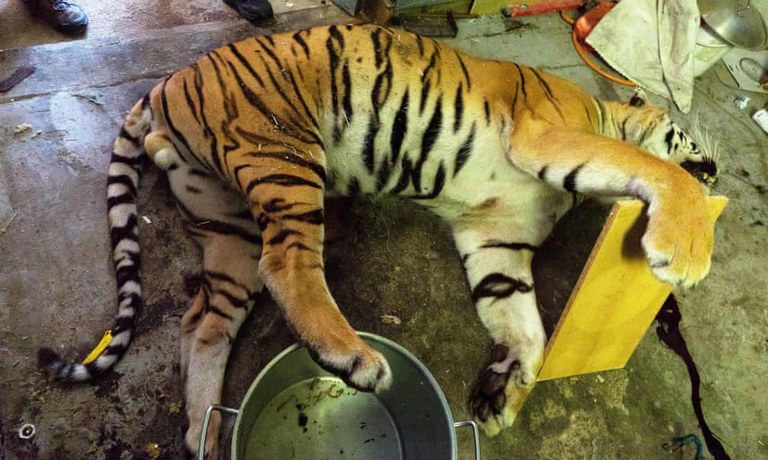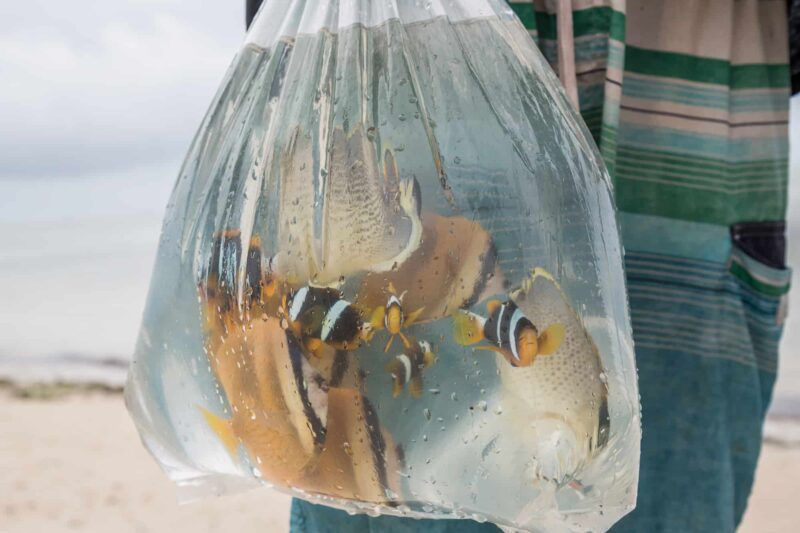Europe’s role in the illegal wildlife trade has tended to receive less exposure and attention than that of other regions, despite posing deep threats to biodiversity. That’s why the Earth Journalism Network made it the focus of a just-concluded two-year project that supported investigations and the production of 31 stories by 13 journalists into the European wildlife trade.
The powerful stories they tell highlight the extent of the trade, the variety of species being trafficked, the methods smugglers use, enforcement gaps and promising approaches for tackling these illegal exchanges.
Here’s a summary of their reporting.
Tigers, parrots, reptiles and fish
British journalist Tristan Martin kicked off the project with a story for The Guardian exposing illegal tiger farms in the Czech Republic. More recently, Marius Daea wrote a feature for Newsweek Romania highlighting the broad nature of the illegal trade in Eastern Europe and the lax enforcement that encourages it.

In stories for the South China Morning Post and ChinaDialogue, Austrian journalist Denise Hruby reported on how increases in postal traffic at Christmas and Chinese New Year provide cover for smugglers. Then in a later article for National Geographic, she exposed how traffickers fly the eggs of endangered macaws to Europe, incubate them and pass the live birds off as captive-bred.
Hruby also uncovered, in a piece for Mongabay.com, how the world’s largest market for reptiles in Germany is a hub for traffickers. And she wrote a longform cover story for SZ magazine that highlights how for decades a trafficker had taken advantage of the Convention on International Trade in Endangered Species (CITES), a multilateral treaty aimed at protecting engangered plants and animals, to smuggle thousands of birds to Europe.
German journalist Roberto Jurkschat probed the role of that treaty too, spending more than a year investigating how trophy hunters and the fashion industry influence decisions of CITES and the International Union for the Conservation of Nature (IUCN) to reduce protections for wildlife. His story, published in English by Buzzfeed and in German by Buzzfeed Germany, goes to the heart of which kinds of wildlife trade are legal and which are not. Jurkschat also wrote an article for the EJN website explaining how he went about his investigation and where it could lead next.
Journalist team Ingrid Gercama and Nathalie Bertrams shined a light on the poorly-understood and poorly-regulated trade in ornamental tropical fish, producing stories in German for Süddeutsche Zeitung and Tages-Anzeiger, in Dutch for the GroeneAmsterdammer and MO* and in English for the BBC. To bring the full investigation to a wider audience, EJN also published a story that summarised them all.
Europe as a source
While highlighting how demand from Europe helps drive the trade, the stories exposed how Europe is also a source of illegal wildlife products.
In addition to looking at the trade in Eastern Europe, Daea produced a feature for Newsweek Romania on the illegal harvesting of sturgeon for the caviar trade. And the Los Angeles Times published Hruby’s report on how demand for caviar is leading to illegal sturgeon harvesting in Bulgaria, threatening the species with extinction.
Oxpeckers Investigative Environmental Journalism produced a story on the ecological impacts of the illegal trade of critically-endangered European eels, which are being trafficked to Asia in huge numbers. National Geographic published Matteo Civillini’s investigation into the illegal songbird trade from Italy to Malta. Also in Italy, British journalist Peter Yeung reported for The Guardian on how poaching of seahorses and sea cucumbers to be trafficked to China is devastating wild populations.
Russian journalists Natalya Paramonova and Angelina Davydova investigated the illegal trade of birds-of-prey from Russia. Their stories for RIA Novosti included one on the threats that trafficking of saker falcons and gyrfalcons poses to their populations; an investigation into concerns that a UAE-funded raptor rehabilitation centre in Kamchatka could provide a cover for smuggling; and a story on how poaching contributed to the 80% mortality of raptor chicks in Siberia in the summer of 2019. Their final story was a feature for Plus One about the illegal trade in saker falcons and efforts to protect the species.
Not all the coverage was grim
Oxpeckers reported how law enforcement agencies in Europe are making an impact on the online illegal trade in products such as ivory, rhino horn, leopard fur and illegal taxidermy. French journalist Léa Surugue produced a story for BBC Future about new forensic techniques that are helping law enforcement agencies to build cases against wildlife traffickers. And Spiegel Online published Hruby’s story on the sniffer dogs in Frankfurt airport that are trained to detect smuggled wildlife products.
As well as supporting story production, EJN partnered with Oxpeckers to develop the #WildEye website. This is the most comprehensive collection of data on seizures, arrests, court cases and convictions related to the illegal wildlife trade in Europe. Joseph’s analysis of #WildEye data showed an increasing number of convictions for illegal wildlife crime in Europe.
EJN is grateful to the Oak Foundation for supporting this project. Through the stories the journalists produced and through the #WildEye platform, the project has highlighted that wildlife trafficking isn’t just a problem for Asia, Africa and South America. Europe too plays a important role as a source, market and trafficking route.
We hope these stories will foster more interest in reporting on the illegal wildlife trade in Europe — including through the use of the #WildEye data (see the guide for journalists). We also expect that that the awareness this project has raised across Europe will contribute to growing calls for greater action from governments to address the illegal trade through, for example, more training for law enforcement and customs officials.
(Banner photo: Exotic fish in a plastic bag in Kenya. Credit: Nathalie Betrams)
